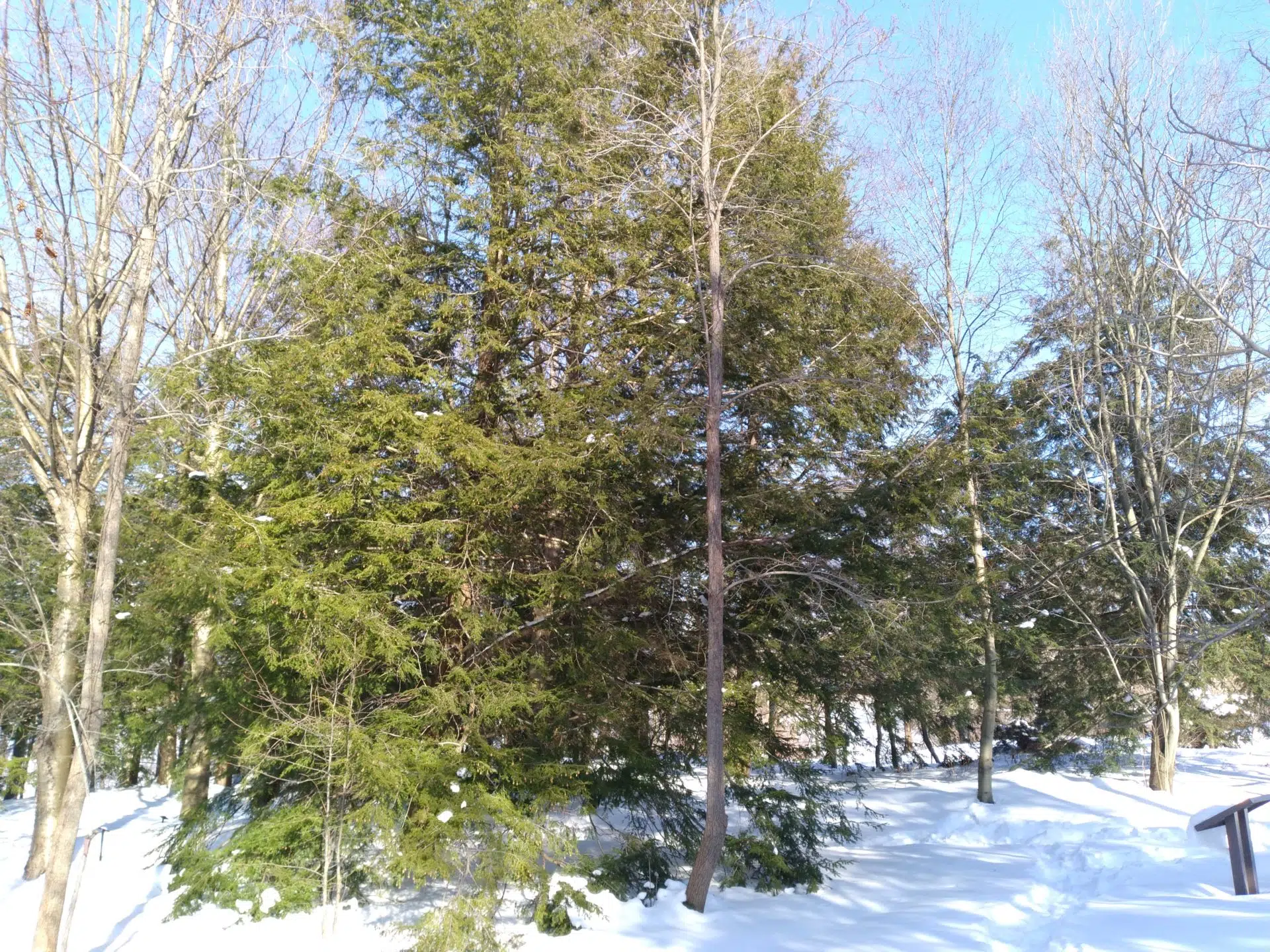Trees
Canada Hemlock
Tsuga canadensis

The geographic range of Canada hemlock in North America extends from southern Quebec, New Brunswick, and Nova Scotia down the Appalachian Mountains into northern Georgia and over to Michigan in the west. Scattered populations are also found in southern Indiana, northeastern Wisconsin and eastern Minnesota. Canada hemlock can be confused with Carolina hemlock (Tsuga caroliniana), which is found growing on slopes in the Appalachian Mountains from Virginia to Georgia.
At the Cleveland Botanical Garden Canada hemlock can be found mostly in the Woodland Garden. At Holden Arboretum they have been planted in the Myrtle S. Holden Wildflower Garden, the Helen S. Layer Rhododendron Garden, and occur naturally along the Woodland and Pierson Creek Trails. The trees on Little Mountain are accessible only on guided hikes.
Canada hemlock trees like cool, humid climates with well-drained soil. When they grow close together their dense canopy and heavy needle-drop help create a cool, moist microclimate. This microclimate can benefit the creeks hemlock grow adjacent to, keeping water cooler for species that are not tolerant of warm water. Canada hemlock are slow growing trees that are not known to send sprouts up from their roots. They can live hundreds of years, with some individuals living up to 550! On average a 40-year-old tree is only 6 inches in diameter and 40-50 feet tall. The largest recorded Canada hemlock in the USA is 61 inches (155 cm) in diameter and 158 ft. (48.4 m) tall.
Male and female reproductive structures may be found on the same branch but mature at different times. Wind carries the pollen from tree to tree. Cones which hold the seeds are green until they ripen in October, being dispersed by the wind into November. These cones are attached well to the branches and may hang onto the tree during the following year. Each cone can hold 10-15 seeds. Canada hemlock has the smallest cones of the genus Tsuga, which are no more than 20mm long with seeds that are about 1.5mm long with a 1mm long wing. Mature trees have been known to have excellent cone crops up to 450 years of age.
Several pests and diseases can impact the success of Canada hemlock, such as hemlock woolly adelgid (HWA), elongate hemlock scale (EHS), gypsy moth, root rot fungi and needle rust fungi. Deer and rabbit browsing can heavily impact them during the winter, although hemlock also acts as winter shelter for these animals, as well as grouse and turkey. Currently, the most concerning issues are the invasive HWA and EHS which can occur together and impact tree health more severely in combination. HWA is a small insect that is most visible in its adult form during the winter months as a small woolly white ball(s) on the hemlock’s twigs. EHS is a small insect called scale because of its appearance, with females being a 1.5mm brown oval shape upon the underside of needles. The EHS starts out even smaller and use their mouth parts to pierce the needles to feed creating yellow banding or making needles drop. EHS also creates white waxy buildup on the needles which can get confused with the white HWA. Pesticide applications do help with reducing/removing both HWA and EGS from trees but is quite an undertaking when hundreds to thousands of trees in a stand could be infested. While these applications impact other insects within the area it usually is a small percentage (~25% of the species associated with Canada hemlock) and its benefits outweigh the cost when compared to areas where Canada hemlock trees have died.
In recent years there has been research on Canada hemlock from New Jersey and Pennsylvania that seem to be exhibiting resistance to HWA infestation, as other trees within the stand die from infestation. These trees have and will continue to be under investigation to understand what is causing them to react differently. Researchers at Holden have and continue to work towards understanding more about the pests’ impact on tree health. For example, research on Canada, Carolina, Japanese, and Chinese hemlocks revealed that the leaf microbiome – the microbes living on the leaf surface – differed between tree species. The implications of differences in the leaf microbiome on resistance to insects are uncertain. Holden also has large stands of Canada hemlock in our natural areas that the Community Forestry & Conservation team assesses and treats for insect infestation.




